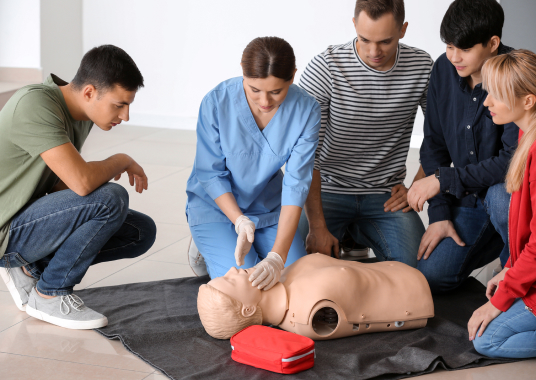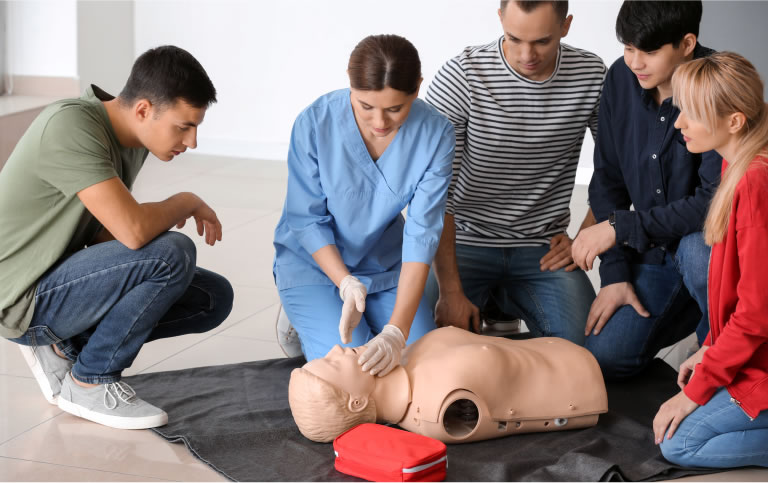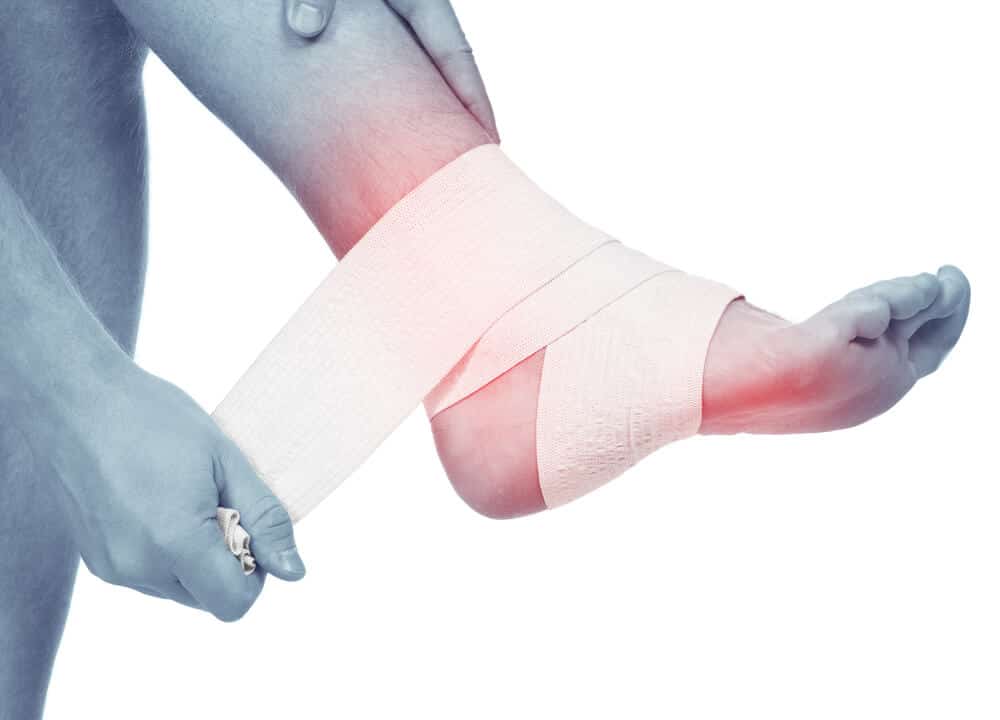CPR, First Aid, BLS, ACLS, PALS certifications.


Learn how to provide essential care before emergency responders arrive with our 100% Online First Aid Course. Receive instant certification valid for 2 years, plus unlimited quiz retakes.
| Chapters | CE Credits | Validity | Cost | Duration | ECC | Exam Attempts | Wallet Card |
|---|---|---|---|---|---|---|---|
| 24 | 6.0 | 2 Years | $36.95 | 2-3 Hrs | Compliant | Unlimited | Download/Print/Mail |
Injuries to muscles, bones, or joints can happen when a body part moves in a way it’s not supposed to. This kind of emergency often results in sprains, fractures, broken bones, or dislocations.
These injuries are usually caused by falls, trips, or sudden impacts. Everyday activities like running or exercising, playing sports, or being involved in a motor vehicle accident can all lead to muscle, bone, or joint damage.
Some clear signs that something is wrong include

A fracture, or broken bone, can range from a small chip or crack to a complete break. If the bone breaks through the skin, it’s considered an open fracture, which is more serious than a closed one, though closed fractures are more common.
A dislocation happens when a bone moves out of its usual position at a joint. This stops the joint from working properly. Dislocations often happen at the shoulder, elbow, wrist, jaw, or hip.
A sprain means ligaments at a joint have torn or stretched. It usually affects the ankle, wrist, knee, or fingers. A strain, on the other hand, is when a muscle is stretched or torn. This often happens in the neck, back, thigh, or calf.

When dealing with a sprain or strain, remember the RICE method:
If you come across a muscle, bone, or joint emergency, here’s what to do:
This chapter in your Online First Aid Course helps you understand how to recognize and manage injuries to muscles, bones, and joints so you can act quickly and safely in real-world emergencies.